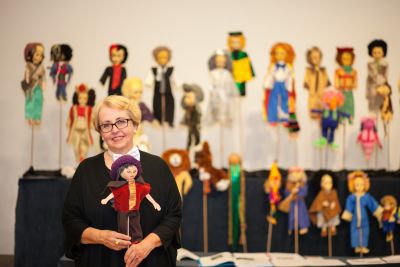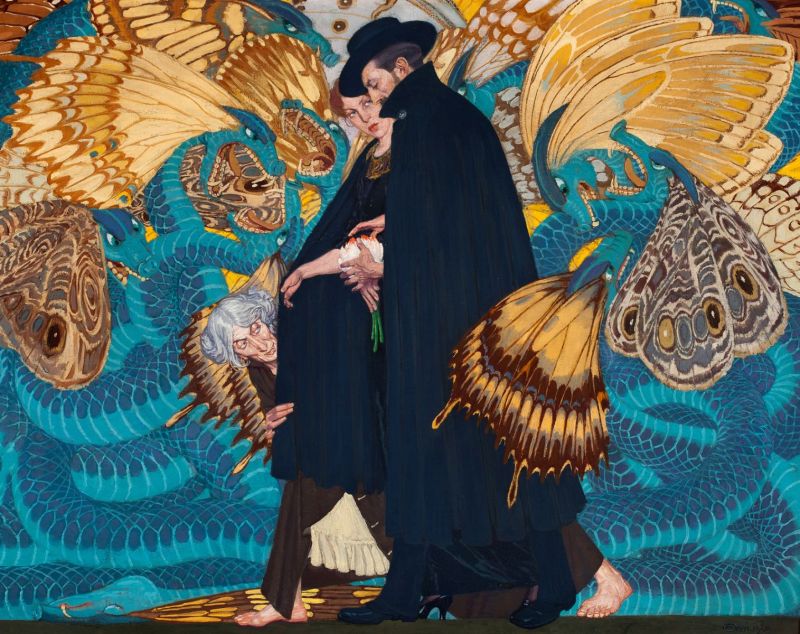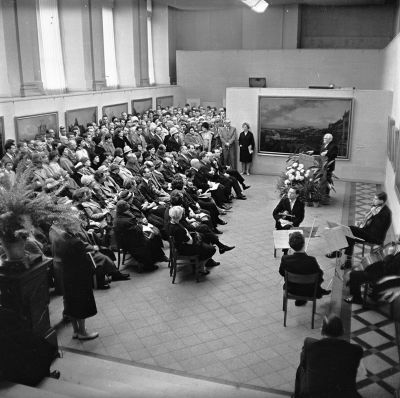Were they really “rebels”? The Munich exhibition “Silent Rebels. Polish Symbolism around 1900”
Mediathek Sorted


































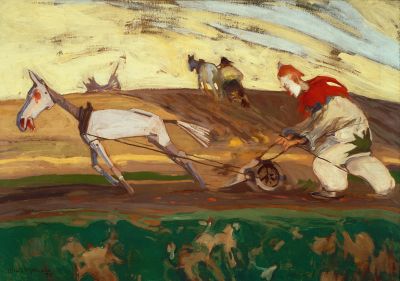


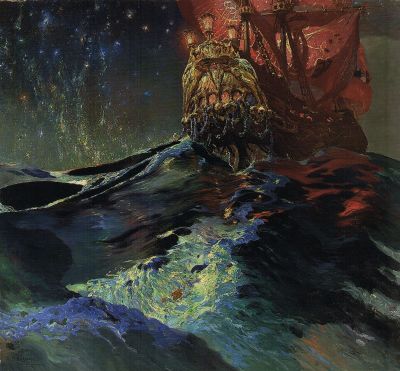
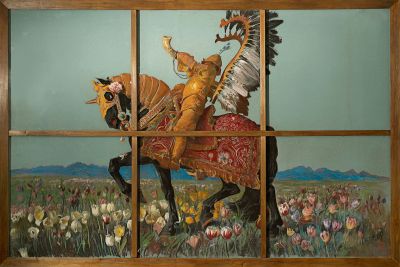



“For the Modernists, the peasantry epitomised the power of survival of the nation at a time when it was not free. With the help of the peasantry as the embodiment of the original Slavic culture, from whom the artists were to draw inspiration, efforts were made to initiate a regeneration in art.”[49] There were contemporary demands for a new, folkloristic sense of colour and line, which was intended to be adopted not only in painting, but also in decorative elements in architecture, the applied arts and fashion. For the critic Artur Górski, this development was reflected in the work of the painter Włodzimierz Tetmajer, and it corresponded to very similar folk art movements in Scandinavia and Germany at the time. Tetmajer, like Axentowicz, had studied in Munich, and brought with him an interest in folkloristic themes from Bavaria and the Alpine region. In Poland, these two artists painted colourful wedding processions, scenes from inns and at Catholic holiday celebrations, processions at religious festivals and funerals, people dancing and playing musicians from Bornowice near Kraków (Fig. 21 ), where Tetmajer settled down, married a peasant’s daughter and established his own artists’ colony. In the same way, the local population from the Carpathian highlands, the Hutsuls (Fig. 22 ) and the people of the Podhale region “were elevated to become symbols of folkloristic vitalism in the new Polish art”.[50] Kazimierz Sichulski and Władysław Jarocki, both pupils of Mehoffer and Wyspiański, spent several months in Tatariw in the Polish Carpathian Mountains, were fascinated by the folk costumes and customs of the local population and painted monumental individual portraits as well as the traditional weddings of the region (Fig. 23 left-hand wall).
While no mention was made at all of Symbolism in the previous essay on religion and tradition, in the seventh section of the exhibition, “Tête-à-Tête with the Portrait” (exhibition room text: “Portraits”), Michał Haake is at pains to point out Symbolist tendencies in Polish portraiture at the turn of the century.[51] This is all the more remarkable in that the Munich exhibition is able to offer important Polish examples of work to substantiate this idea (Fig. 24 ), while the earlier studies by Hofstätter, Lucie-Smith and the “Symbolism in Europe” exhibition only explored the issue at the margins, rather than in separate sections. Since Symbolism, in Haake’s view, emerged to a particular degree as being the ability of the artists to forge new paths into extrasensory, metaphysical, secretive and spiritual depths “which can neither be comprehended by the cognitive mind, nor described in words”,[52] it appears logical that these tendencies should also be present in the portraits of the period.
The superior-distanced “Self-Portrait in Spanish Costume” (1911, Fig. 24 left) by Edward Okuń may only be of an anecdotal nature, since the artist had previously seen an exhibition by the Spanish painter Ignacio Zuloaga. In the self-portrait painted in 1896, (Fig. 24 centre left) by Julian Fałat, who had been Director of the Kraków Art Academy since the previous year and who had introduced fundamental reforms there, the profound, pensive facial expression of the painter, who is interrupted while working, contrasts with dynamic elements such as the moving palette, a blue-and-white track in the snow running diagonally over the canvas, and the dogs running in the upper edge of the painting, depicting different levels of the psyche. In the works of Malczewski, the protagonist of Polish Symbolism, the painter and other portrait subjects are accompanied by the “fantastical creatures from mythology and Romantic poetry” typical of his work.[53] The self-portrait “On One String” (1908, Fig. 25 ) shows the famous goddess of death in a suit of armour, while the portrait of the poet Adam Asnyik (1899, Fig. 24 right centre) shows a group of satyrs playing the flute. “Self-Portrait with Death” (1902, Fig. 24 right) shows a female figure holding a garlanded skull.
In 1900, Weiss painted a “Self-Portrait with Masks” (Fig. 26 ; reminiscent of “Self-Portrait with Masks” by the Belgian Symbolist James Ensor painted one year earlier[54]). In a letter to his parents, he described the painting as follows: “Paris is seething inside me. Thousands of different races, passions, types. Hence the masks in my arm – a masquerade of feelings. In the foreground, the mask of a woman, a diabolical woman who kills purely for pleasure.”[55] Entirely under the overly powerful influence of a religiosity that may already be in the process of disintegrating, Wyczółkowski shows the important and controversial art critic and collector “Feliks Jasieński at the Organ” (or rather, at the harmonium, 1902) as a noticeably small figure below a lamentation of Christ that has almost disappeared from view and a fragmented sculpture of the crucified Christ from Jasieński’s own collection.[56] Against the background of a Pegasus, mythological symbol of poesy, whose hoofbeat created Hippocrene, the spring that inspired singing and poetry, Mehoffer painted one of many portraits of his wife Jadwiga (Fig. 27 ), born Radzim-Janakowska and herself a painter, whom he had met in Paris and of whom he claimed that she would “never descend from the plinth of inimitability and originality”[57]. Even if it is likely that the background to the painting was a wall frieze that existed in real life, through his composition, Mehoffer confers a realm of the highest intellectual order onto the telling expression and living embodiment of the portrait subject.
[49] Agnieszka Skalska 2022 (see note 46), page 154
[50] Ibid., page 157
[51] Michał Haake: Tête-à-Tête mit dem Porträt. Die Erneuerung der polnischen Bildniskunst an der Wende vom 19. zum 20. Jahrhundert, in: “Stille Rebellen” exhibition catalogue, 2022, page 179–187
[52] Ibid., page 181
[53] Ibid.
[54] James Ensor: Self-Portrait with Masks, 1899. Oil on canvas, 120 x 80 cm, private collection, Antwerp; Symbolism in Europe 1976 (see note 8), page 66 f.
[55] “Stille Rebellen” exhibition catalogue, 2022, page 199
[56] Image on the online collection portal of the National Museum of Kraków, MNK Zbiory Cyfrowe, https://zbiory.mnk.pl/pl/wyniki-wyszukiwania/katalog/142860
[57] Józef Mehoffer: Dziennik [Diary], published and annotated by Jadwiga Puciata-Pawłowska, Kraków 1975, page 422

